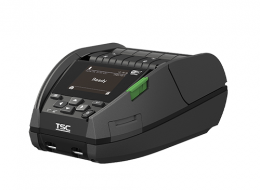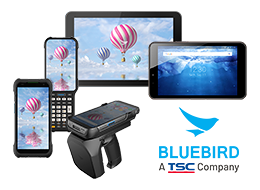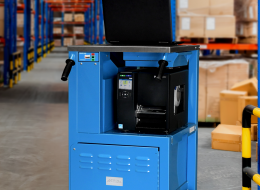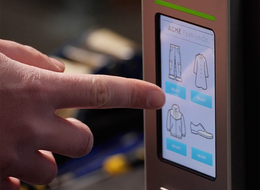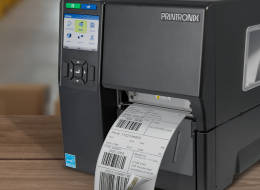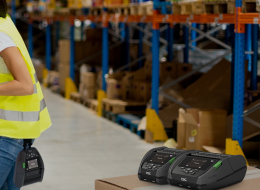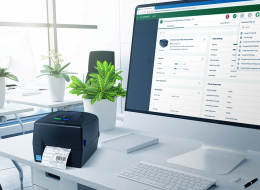Welcome to Our Blog
Get the latest information on new products and solutions, trending industry topics, best practices, tip and tricks, and much more.
Automotive
1429
/en/blog/automotive
Barcode Inspection
418
/en/blog/barcode-inspection
Cannabis
1430
/en/blog/cannabis
Company News
415
/en/taxonomy/term/415
Entertainment & Hospitality
1428
/en/blog/entertainment-hospitality
Events and Tradeshows
1421
/en/blog/events-and-tradeshows
Food & Beverage
1426
/en/blog/food-beverage
Healthcare
1425
/en/blog/healthcare
High Resolution
414
/en/blog/high-resolution
Industry Trends
1419
/en/blog/industry-trends
Manufacturing
1424
/en/blog/manufacturing
Mobile Printing
1420
/en/blog/mobile-printing
Remote Printer Management
1432
/en/blog/remote-printer-management
Retail
1423
/en/blog/retail
Retail
1435
/en/blog/retail-0
RFID
416
/en/blog/rfid
Software Solutions
1433
/en/blog/software-solutions
Standalone
419
/en/blog/standalone
Supplies
417
/en/taxonomy/term/417
Tips & Best Practices
1431
/en/blog/tips-best-practices
Transportation & Logistics
1422
/en/blog/transportation-logistics
Warehouse & Fulfillment
1427
/en/blog/warehouse-fulfillment
Whether as a patient or a visitor, there’s a pretty good chance you've come across the now ubiquitous patient wristband at your last hospital visit. While now a routine part of healthcare operations, receiving hospital care and treatment before wristbands was fraught with human error, with potentially deadly results.
Distribution centres (DCs) are the foundation of modern retail fulfilment. In a landscape defined by speed, precision, and customer expectations, DCs largely shape how quickly and accurately inventory flows across the entire retail network.
In unified commerce, the store has become more than just a point of sale—it's now a fulfilment hub, a service point, and a brand experience centre. Store teams play a critical role in retail transformation—but they can only succeed when empowered with timely data and adaptive technologies.
Continuing from our previous discussion on item-level tracking and digital transformation, this article explores how GS1 Digital Link and item-level tracking work together to connect physical products with rich digital data. Adopting these new standards can help retailers stay competitive in today’s retail landscape by unifying operations, improving traceability, and enhancing customer engagement.
In our previous blogs, we explored how seamless shopping and swift fulfilment are reshaping retail. Driving these changes are key digital initiatives—like item-level tracking with RAIN RFID, Digital Product Passport (DPP), Digital Link, and Sunrise/ Ambition 2027 (2D barcodes)—that enable real-time visibility, compliance, and stronger customer trust. As retailers move toward unified commerce, these capabilities are no longer optional but essential to staying competitive.
As a retail DC operations manager, how do you imagine fulfilment evolving? With unified commerce blurring the line between in-store and online shopping, distribution centres (DCs) must keep pace with real-time inventory demands and enable faster fulfilment and seamless customer experiences. Smart DC solutions make this transformation possible.
Did you know that many industries, including retail, healthcare, logistics, and manufacturing, are increasingly adopting RFID technology? The driving force behind this is their desire to streamline operations with automated data collection and real-time visibility.
Imagine finding the perfect pair of shoes online and checking the retailer’s app for availability. It shows they’re in stock at a nearby store, so you head over there, confident that your trip won’t be in vain.
In today’s fast-evolving retail landscape, data is the key to unlocking unified commerce. AI, cloud computing, and automation are transforming retail operations—and they all rely on accurate, real-time data. This is where AIDC technologies play a crucial role, enabling seamless data capture, automation triggers, and intelligent decision-making. By integrating and analysing data across channels, retailers can streamline operations, enhance consumer engagement, and drive long-term loyalty.
Retailers today face rising customer expectations, mounting operational costs, and constant supply chain disruptions. To stay competitive, businesses must embrace technology to streamline operations and improve efficiency. Here are three significant challenges retailers face and how technology—powered by AIDC (Automatic Identification and Data Capture)—is unlocking a more unified commerce experience.

